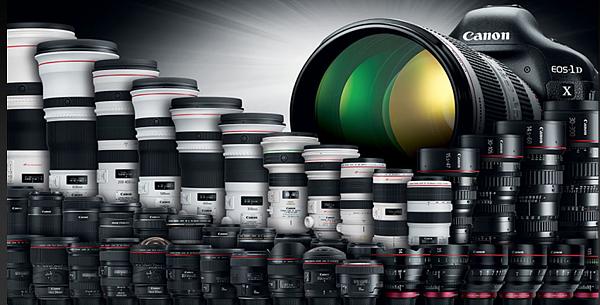Production of interchangeable EF lenses for the Canon EOS-series AF (autofocus) single-lens reflex (SLR) cameras began in 1987 at the Company’s Utsunomiya Plant and now includes manufacturing bases at Canon Inc., Taiwan; Canon Opto (Malaysia) Sdn. Bhd.; and Oita Canon Inc. in southern Japan. In May 2013, EF lens production surpassed the 90-million-unit mark and now, approximately eleven months later, Canon is commemorating its first-in-the-world1 achievement of having manufactured 100 million interchangeable lenses.
Canon’s proprietary EF lenses, launched in March 1987 along with the EOS SLR camera system, have continued to evolve since their introduction, leading the industry through the incorporation of a wide range of innovative technologies, including world’s firsts2 such as the Ultrasonic Motor (USM), Image Stabilizer (IS) technology, and a multi-layered diffractive optical (DO) element. In May 2013, aiming to further expand the realm of photographic expression, the Company introduced the EF 200-400mm f/4L IS USM Extender 1.4X, the world’s first3 super-telephoto zoom lens with a built-in 1.4X extender allowing for a continuous zoom range from 200mm to 560mm (f/5.6).
In recent years, in addition to updating such models as super-telephoto lenses ideal for sports and nature photography along with zoom lenses that offer a bright f/2.8 maximum aperture throughout the entire zoom range, Canon has launched multiple entry-level interchangeable lenses equipped with stepping motor (STM) technology that help deliver smooth and quiet autofocus performance during video recording. As a result, the Company’s extensive EF lens-series lineup currently comprises a total of 89 models.4 To further enhance its lens offerings, Canon has expanded the optical technologies incorporated in its EF lenses into new categories, launching EF Cinema Lenses for digital cinematography in January 2012.
Furthermore, during the 11-year period from 2003 to 2013, Canon maintained the No. 1 share worldwide within the interchangeable-lens digital camera market and, in February 2014, marked another manufacturing milestone as combined production of its film and digital EOS-series interchangeable-lens cameras surpassed the 70-million-unit mark.
Canon will continue refining its diverse imaging technologies based on its core optical technologies, striving to produce outstanding and reliable lenses and cameras that cater to the varying needs of photographers – from first-time users to advanced amateurs and professionals – while contributing to expanding the photographic and video imaging culture.
Canon’s proprietary EF lenses, launched in March 1987 along with the EOS SLR camera system, have continued to evolve since their introduction, leading the industry through the incorporation of a wide range of innovative technologies, including world’s firsts2 such as the Ultrasonic Motor (USM), Image Stabilizer (IS) technology, and a multi-layered diffractive optical (DO) element. In May 2013, aiming to further expand the realm of photographic expression, the Company introduced the EF 200-400mm f/4L IS USM Extender 1.4X, the world’s first3 super-telephoto zoom lens with a built-in 1.4X extender allowing for a continuous zoom range from 200mm to 560mm (f/5.6).
In recent years, in addition to updating such models as super-telephoto lenses ideal for sports and nature photography along with zoom lenses that offer a bright f/2.8 maximum aperture throughout the entire zoom range, Canon has launched multiple entry-level interchangeable lenses equipped with stepping motor (STM) technology that help deliver smooth and quiet autofocus performance during video recording. As a result, the Company’s extensive EF lens-series lineup currently comprises a total of 89 models.4 To further enhance its lens offerings, Canon has expanded the optical technologies incorporated in its EF lenses into new categories, launching EF Cinema Lenses for digital cinematography in January 2012.
Furthermore, during the 11-year period from 2003 to 2013, Canon maintained the No. 1 share worldwide within the interchangeable-lens digital camera market and, in February 2014, marked another manufacturing milestone as combined production of its film and digital EOS-series interchangeable-lens cameras surpassed the 70-million-unit mark.
Canon will continue refining its diverse imaging technologies based on its core optical technologies, striving to produce outstanding and reliable lenses and cameras that cater to the varying needs of photographers – from first-time users to advanced amateurs and professionals – while contributing to expanding the photographic and video imaging culture.






















